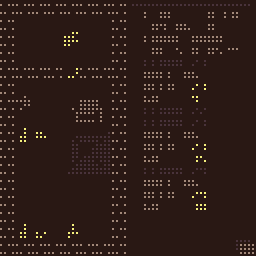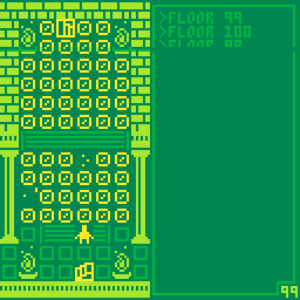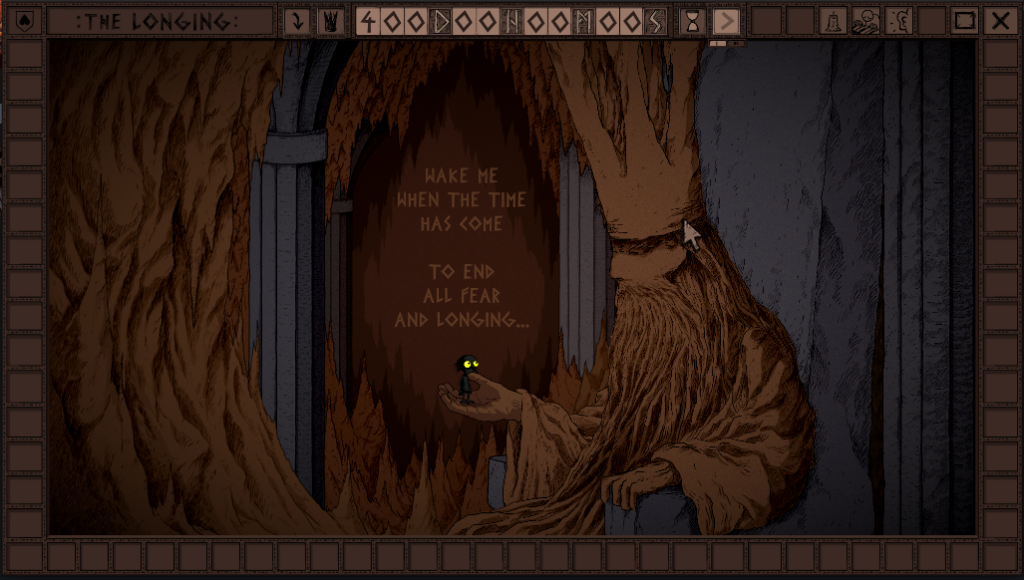Last week Mike introduced this neat Jam game to me: The Tower.
The premise is simple. You are climbing a tower with 100 floors. At each floor, you roll a d100. If it is higher than the floor you are in, you go up. If it is lower, you go down.

What makes this game really fun is the great use of tiles, colors and text.
Each floor is unique, from traditional tower rooms, to parks, to caves, to more weird stuff. In some of the floors you can talk to people who are trying to climb or leave the tower, or just decided to live where they are.
Every floor has only three colors, and there are several visual and audio glitches, giving everything an uncanny vibe. And as you go up, the probability of going up goes down. You slip a few floors, and you start to calculate in your mind how unlikely it would be to get all the way to floor 100. And the game gets more and more glitch-y as you go up.
You start to think: Is there a trick to the tower? Is the dice fair? (Spoilers after the next image. Go play the game)

The first time I played this game, I went up to floor 43. I wanted to go all the way to 50, since that would be the midpoint where it would be more likely to go down than up, but gave up after a few slips.
I told people how amazing the game was on wandering.shop, and was planning on putting the game behind me, but got a lot of feedback on my suggestion. So last Sunday I decided to give the game a go again, and found out that it was available on the pico-8 BBS. Which means that I had access to the games’ source code. (Real spoilers after the next image)

The source code of the game was very compressed. They used every single compression trick they could to fit all the tiles, text and the 100 levels. But it was fun that there was a large ASCII art right at the top of the code, like a welcome mat. I started digging through the code, and soon found the most important thing.
The dice roll is a fair one. No tricks (AFAICT). And it was easy to fix the dice to roll 100 every time. And so I did it.

Playing with god dice was, to be honest, a scary experience. When you roll a 100 in the game, a little happy tune play. But it seems that every time you roll it, a little counter or something goes inside, distorting things a little bit. Normally you can’t notice it, since you roll 100’s so rarely, but by floor 40 my sound was getting really distorted.
As I climbed the tower, things started to get more and more glitch. The music started to feel like someone scratching a blackboard. fake tiles started appearing everywhere, and sometimes replaced the real tiles. Sometimes they would replace the path or the upstairs, and I had to quit and reload the game.
Was this the game rebelling against my cheat? Or was this the expected experience? How could some one survive this glitch-land going up and down infinitely on fair dice?
The characters also got “glitch-y”, speaking really spooky things. What started as a quirky indie game soon became really creepy.
And when I got to the top…
Well, I will leave that last spoiler for you. If you want, leave me a message and I’ll tell you how to fix the game. But if you know how to use pico-8, it should not be very hard.
Just don’t be stupid and do it late at night like I did! Or do it! Maybe it is better that way :#

